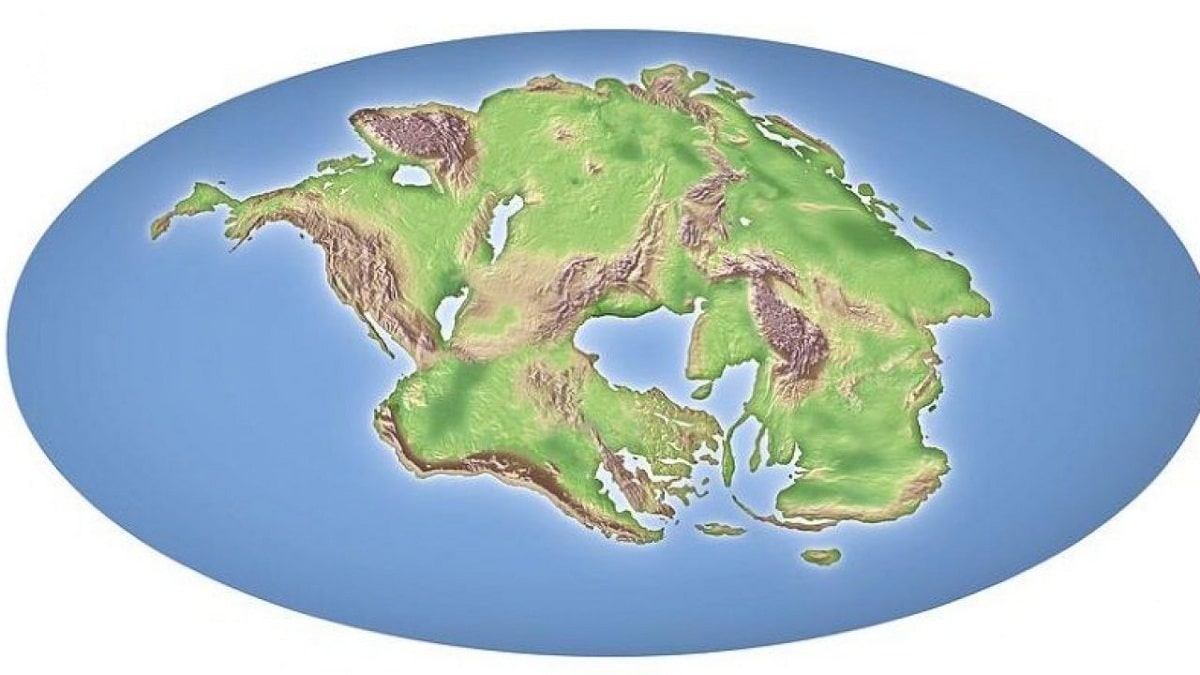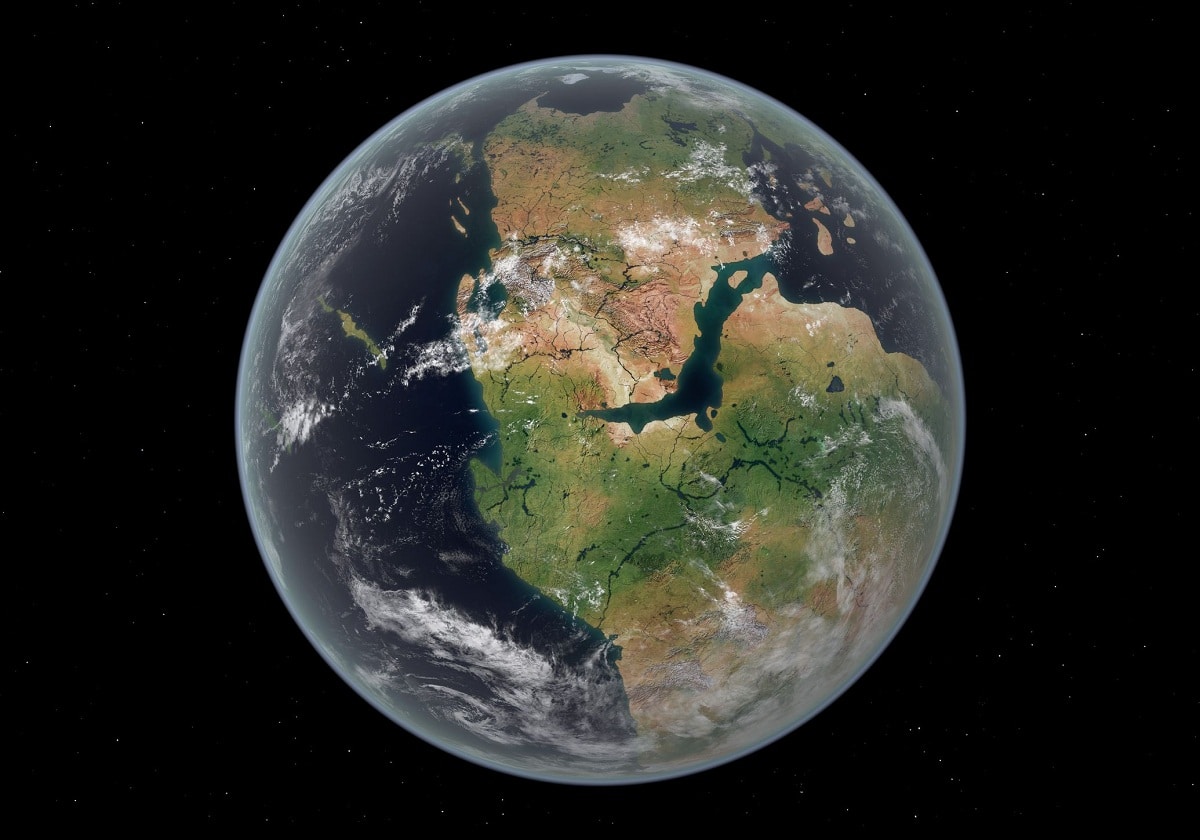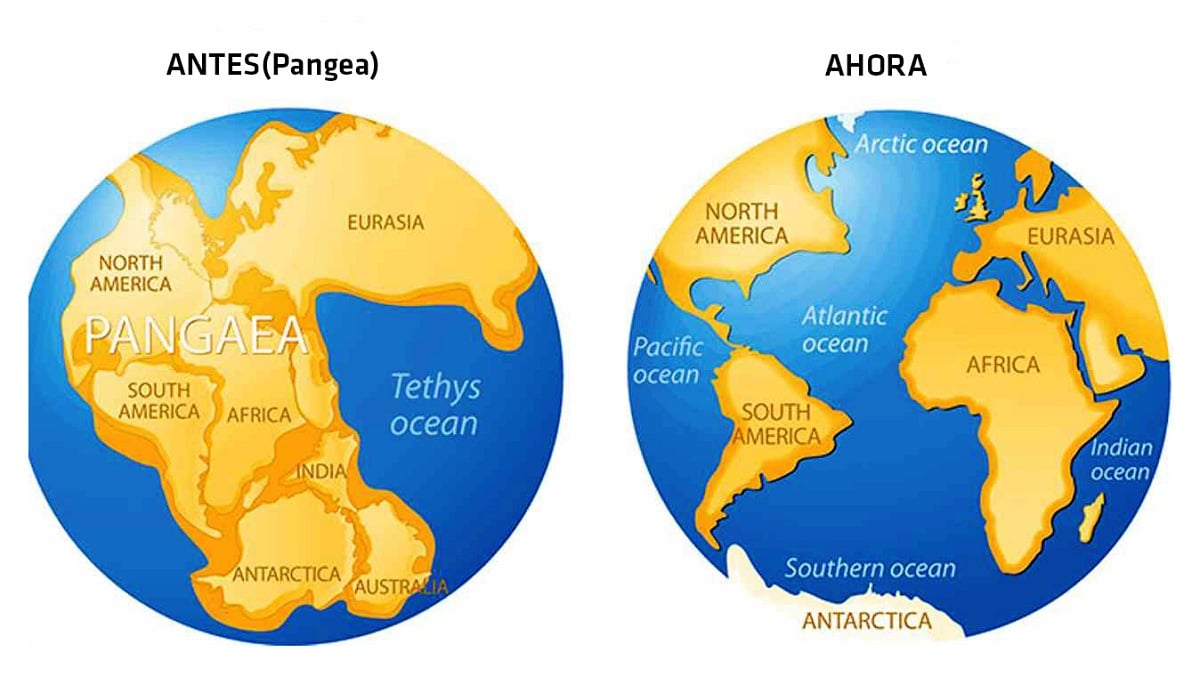
In ancient times the continents were not arranged as they are today. At the beginning of all there was only one supercontinent that consisted of a large area of the earth's surface. This continent was called Pangea. It existed during the late Paleozoic and Mesozoic early. This time approximately 335 million years ago it happened. Later, approximately 200 million years ago, this immense land mass began to separate by movement of tectonic plates and divided the continents as we know it today.
In this article we are going to tell you everything you need to know about Pangea, its evolution and its importance.
Key features

Much of this continent was concentrated in the southern hemisphere. The only ocean that surrounded it was named Panthalassa. Life in Pangea was different from today. The climate was warmer and the life of animals and plants was completely different. Some of the animals that lived during the 160 million years that this supercontinent existed were the traversodontids and the Shringasaurus indicus. These are animals that are characterized by having two front horns and a body length of more or less about 4 meters. The first beetles and cicadas appeared on this supercontinent. It's already late Triassic period when many of the reptiles prospered. The first dinosaurs formed stepped on Pangea.
Not much is known about marine life since fossils have hardly been found in the Panthalassa Ocean. It is thought that ammonoids, brachiopods, sponges and pens were the animals that existed at that time. And it is that these animals have adapted over the years. As for the flora, it was the gymnosperms that dominated. These plants were replacing all spore-producing plants.
Alfred Wegener and Pangea

This man was a German scientist, researcher, geophysicist, meteorologist who was noted for being the creator of the theory of continental drift. It is this man who began to organize the ideas that the continents had a very slow movement over the years. This movement has never stopped and today it is known to be caused by convection currents in the Earth's mantle.
This idea of the movement of the continents it was raised in 1912 but was not accepted until 1950, 20 years after his death. And it is that various studies of paleomagnetism had to be carried out whose objective was to analyze the Earth's magnetic field at present in the past. Furthermore, this study also intended to know the location of the tectonic plates in the past.
It all came about when Alfred Wegener looked at an atlas and wondered if the contours of the continents fit together. This is how he realized that the continents had once been united. After a longer study he was able to explain the existence of a supercontinent that he named Pangea. The separation of this supercontinent was a very slow process that took millions of years and began to separate the rest of the terrestrial portions that formed the 6 continents of today.
Tectonic plate separation
Throughout history there are many scientists who have tried to reiterate how the movement of the continents could have been from the position of Pangea until today. It is known from various studies that tectonic plates move constantly as they are located above a viscous surface or mantle. This viscous mantle corresponds to the materials of the terrestrial mantle. These convection currents of the mantle cause the displacement of the continents due to a movement of the masses due to differences in densities. It has also been discovered where there are cases where the plates break and separate more quickly.
Some research has indicated that the separation of tectonic plates takes place in two phases. The first phase is where the movement of the continents is characterized. The second is where, after millions of years of stretching, the plates get too thin, break in, and separate, letting ocean water come between them.
Life before Pangea was totally different. The mainland and life did not arise with this supercontinent. Before that there were some continents such as Rodinia, Columbia and Pannotia. In approximate data, Rodinia existed 1,100 million years ago; Columbia between 1,800 and 1,500 million years ago and Pannotia has such accurate data. This movement of the continents indicates that within millions of years the terrestrial distribution will be different from the current one. This is because the earth is in constant motion. It is a fact that the distribution of the continents was completely different within millions of years.
When Pangea gave rise to Gondwana and Laurasia the first coastlines and the Atlantic and Indian Oceans emerged. The ocean that divided these two land portions was called Tethys.
Pangea, past and future

Although life in the future will be different, technology allows us to recreate what our planet will look like in 250 million years. It is this time when it is thought that there will be a radical change and it has been baptized by the name of Pangea Ultima or Neopangea.
All this is a mere assumption, explanations persist developed by scientists who have studied the movement of tectonic plates for many years. If the earth does not suffer any impact from asteroids, another phenomenon that can completely change the entire landscape of the earth, it is thought that very little of the Atlantic Ocean will be left because the continental masses will rejoin into a supercontinent.
Africa is also estimated to collide with Europe and Australia will move north to end up joining the Asian continent. That is, our planet will be something similar to how it was approximately 335 million years ago.
I hope that with this information you can learn more about Pangea and its characteristics.